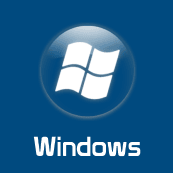A massive post has gone live over at the Building Windows 8 Blog, Building Windows for the ARM processor architecture, and it spells out a huge amount of details concerning Windows 8 and its development and use on ARM based devices.
This post is also very unique in that it is apparently written entirely by Steven Sinofsky the President of the Windows Division at Microsoft. Usually a Windows team member writes the post and Steven provides a brief introduction.
It is not an understatement to say that the tech community has been waiting for this post for quite a while. The question of Windows on ARM, WOA for short according to the story, has been the subject of Internet discussions ever since it was announced last year.
So if you are technically minded and want to understand those technical foundations of WOA then head over to the post and read away – it may take a while to digest all of that data.
Here I am going to highlight some key snippets of the post that brings to the forefront where Microsoft is headed with WOA from a users perspective.
- Windows on ARM, or WOA, is a new member of the Windows family building on the foundation of Windows. The goal is that using WOA “out of the box” will feel just like using x86/64 Windows 8. You will sign on the same way. You will start and launch apps the same way. You will use the new Windows Store the same way. You will have access to the intrinsic capabilities of Windows, from the new Start screen and Metro style apps, to peripherals.
- WOA represents a deep technical partnership across ARM licensees, peripheral manufacturers, PC manufacturers, and Microsoft. With WOA you can look forward to integrated, end-to-end products – hardware, firmware and WOA software all built from the ground up.
- All Metro style apps in the Windows Store work on both WOA and x86/64 Windows 8. WOA provides Metro style apps from PC to cloud with apps from Microsoft that support mail, calendaring, contacts, photos, and storage. WOA provides industry leading support for hardware accelerated HTML5 with Internet Explorer 10.
- WOA supports the Windows desktop experience. This includes explorer, Internet Explorer 10 for the desktop and most other Windows desktop features which have been significantly architected for touch and minimized power/resource consumption.
- WOA includes desktop versions of Microsoft Word, Excel, PowerPoint, and OneNote.
- WOA PCs are still under development and our collective goal is to see them around the same time as PCs designed for x86/64 and Windows 8.
- Microsoft and ARM partners will be making available a limited number of test devices to developers in a closed, invitation only program. These are not samples or hints of forthcoming devices, but tools for hardware and software engineers.
Certainly is a shift from the normal thought process when it comes to Windows but it is going to be amazing to see some of these systems on a chip devices with WOA running on them. It really does open up a lot of possibilities relating to portability, battery life and functionality.


